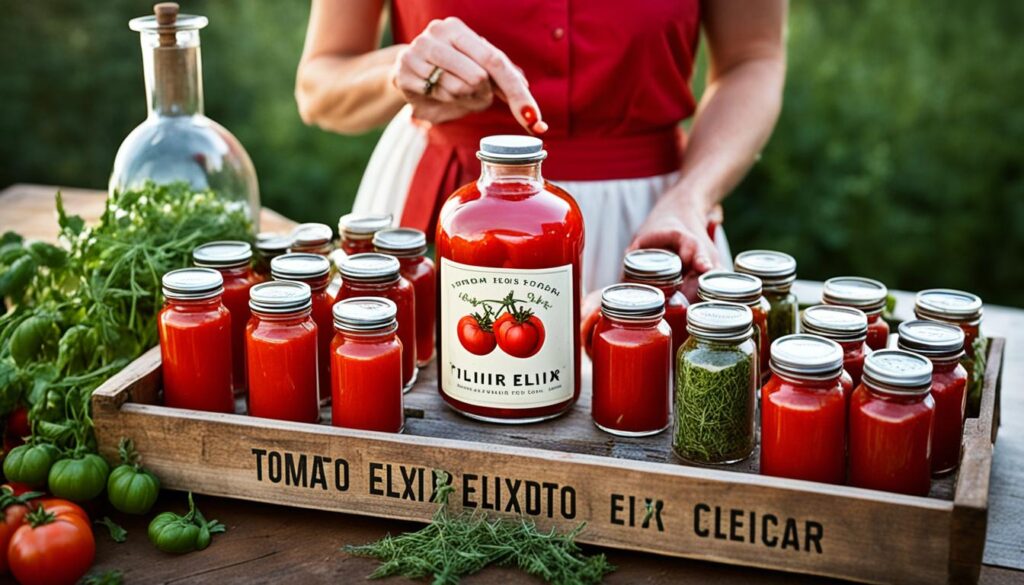Tomatoes were once seen as a cure-all, not just a kitchen staple. This change started in the early 18th century in the southern U.S. People grew them for looks, not food. It was a tough journey for tomatoes to become accepted as food.
At first, no one saw the health benefits of tomatoes. Until the 1820s, many thought they were poisonous. European doctors helped change this view, showing the health benefits we know today.
Dr. John Cook Bennett was a key figure in making tomatoes popular for health. He said tomatoes could fix many health problems, from stomach issues to serious illnesses. This started a health trend in the 19th century around tomatoes.
Key Takeaways
- Tomatoes were initially grown as ornamental plants in the U.S.
- Many Americans once believed tomatoes were poisonous
- European-trained doctors helped change perceptions about tomatoes
- Dr. John Cook Bennett promoted tomatoes as a cure-all
- Tomatoes were claimed to treat various health issues
- This health craze influenced cookbooks and gardening journals
The Evolution of Tomato Ketchup: From Medicine to Condiment
Tomato ketchup’s story from medicine to condiment is quite interesting. It started in China as a fish sauce called Ge-thcup. When it reached England, the recipe changed a lot. In 1812, James Mease made the first tomato ketchup recipe, changing how people used tomatoes in medicine.
By the 1830s, tomato ketchup was seen as a cure-all. People thought it could fix diarrhea, indigestion, and jaundice. Dr. John Cook Bennett saw an opportunity and sold the recipe as ‘tomato pills’. This started a wave of tomato-based remedies in the market.
The craze for tomato remedies reached its peak in 1850. But soon, the bubble burst. In 1876, Henry Heinz created a new ketchup recipe. He used ripe tomatoes, vinegar, sugar, salt, and spices. This version quickly became popular as a tasty condiment, not a medicine.
Heinz’s creation ended ketchup’s medicinal era. It turned from a supposed cure-all to a beloved food staple. Now, we enjoy ketchup on burgers and fries, forgetting its past as a tomato remedy.
Tomatoes Sold as Medicine: A 19th Century Health Craze
In the 1840s, tomatoes became a big deal in health trends. Doctors started using tomatoes in new ways, thinking they could fix many health problems. They even replaced a common medicine called calomel with tomato pills and extracts.

These products came with catchy slogans, saying they could fix all health issues. The benefits of tomatoes were overstated, making some people think they could replace regular medicine.
Not everyone was convinced, though. A doctor named William Darlington spoke out against these tomato remedies. He believed they were just a way to trick people. Some people still thought tomatoes were dangerous and caused health problems.
Even with doubts, tomatoes kept gaining popularity as food and medicine. This change helped tomatoes become the beloved ingredient we know today.
From Medicinal Claims to Culinary Staple: The Tomato’s Journey
By the mid-1800s, Americans started to view tomatoes differently. They saw the fruit’s culinary value more than its medicinal claims. In 1865, The American Agriculturalist suggested enjoying tomatoes for their taste, not their health benefits.
Now, tomatoes are loved for their flavor and how versatile they are in cooking. They are a key part of dishes like caprese salads and BLTs. Even though old health claims were too high, research still looks into the real benefits of tomatoes for health.
The story of tomatoes going from feared to loved to a kitchen staple is interesting. It shows how our views on food and health have changed. Today, studies focus on their health benefits, like antioxidants and fighting cancer.
Learning more about tomato health benefits shows they deserve a spot in our kitchens and on our plates. Whether for taste or health, tomatoes keep winning over food lovers and health experts.

Leave a Reply